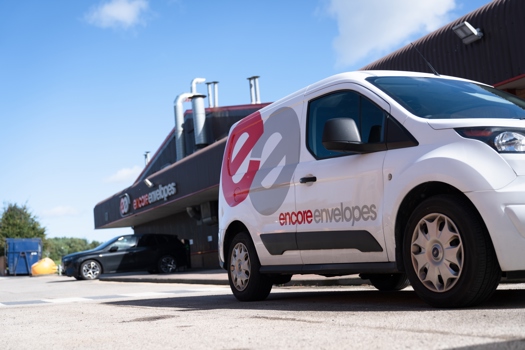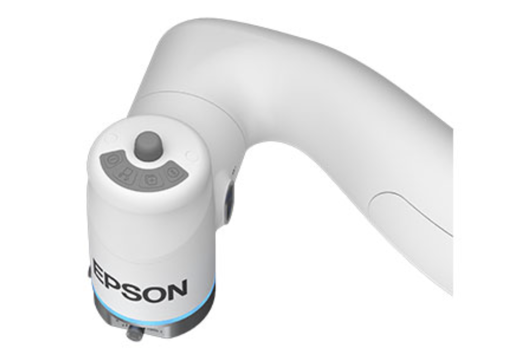Cash may be king but as a long-term motivator it has limited value; employees either get used to the amount they’re paid or resent the amount lost to tax.
In truth, to properly motivate staff firms require systems that recognise and reward. The fact that employee recognition is so important should be obvious for all to see; countless firms have boards in the public domain that detail ‘employee of the month’. And they do this because they’ve understood that workers want not just money, but recognition amongst their peers for outstanding work and service.
The point of a rewards programme
According to Lauren Sweeney, head of people at Virgin Incentives and Virgin Experience Days, happy employees who can grow within a business should be the aim of any HR team for if nothing else, “high staff turnover not only slows business growth and costs businesses money on recruitment and training, it also stunts company culture due to the continual change of personnel”.
In her view, a solid rewards programme helps attract and retain talent.
And Charles Cotton, senior reward and performance adviser at the CIPD agrees, but says that a reward policy should be strategic and “support an organisation to reach its long-term business goals”. He too thinks that if implemented correctly, it can help to attract, retain and engage employees. But it can do more for “an organisation’s objectives and legal obligations as well as the needs of its employees – it can enhance a company’s reputation as an employer of choice and help it communicate better its employee value proposition”.
He bases his view on the contents of the CIPD’s 2018 Reward management survey.
Lauren Goldgrub, general manager of OneHub Recognition – Benefex, thinks along the same lines as Sweeney and Cotton. For her it’s all about outcomes: “Successful recognition programmes have a huge impact on loyalty, motivation and engagement.” She’s very firm in her belief that “whatever form rewards come in – peer-to-peer or management-driven, personal email or Total Reward Statement, globally enabled or simply acknowledging an employee of the month – there’s a proven link between recognition, employee wellbeing and strong employer brands”.
But with a slight twist comes Dani Novick, managing director of Mercury Search & Selection. She thinks that the phrase ‘reward programme’ is wrong “because any incentive programme should be there to motivate, engage and then reward people”. She says it’s about getting the incentivisation and engagement right. To her mind, they’re not for use in team building but would work as a sales incentive which is part of “an overall incentive for sales to continually contribute to the success of the company”.
For Novick, it’s not about only rewarding the end-result “as schemes don’t always take into account all of the steps that need to happen to get to the end goal”. She points to sales as an example – here she advises against rewarding on turnover because profitability gets missed. She, instead, would reward on, say, speed of response, customer queries resolved, reduction in customer complaints – all of which will ultimately result in increased sales.
Novick’s thoughts aside, Sweeney quotes a Virgin Incentives whitepaper that surveyed 2,000 workers across the UK: “It found that 22% had never received a reward from their employer. No birthday gifts, no extra days off, no Christmas hampers or boxes of chocolates. Nothing.” That for her is worrying.
But what seems to gall her most is that, as she says, “rewards don’t have to be expensive, challenging or complicated. They just have to be worthwhile, thoughtful and ultimately make the workplace as attractive as possible”. More on this later.
Creating a programme to recognise and reward
Setting up a recognition programme from scratch requires planning and Sweeney says that “you need to define your objectives and consider your reasons for starting a reward and recognition scheme as this will impact what you offer”. This, she says, can include a wide range of business goals, such as reducing staff turnover, driving sales and changing the company culture.
Of course, rewards must be used strategically. Sales won’t rise because of a gift on someone’s birthday. Similarly, loyalty doesn’t follow because of performance-based rewards.
For Goldgrub, reward and recognition should go hand in hand with organisational values. In her experience, “the most successful recognition strategies tend to be those that show appreciation for behaviours that align with organisational values”. Doing this brings a firm’s values to life and demonstrates to employees how they can show those core values through their work.
To this Novick adds that schemes need to be role or function specific as opposed to being based on individual jobs or company wide. She explains that “there is no point incentivising or recognising commonality of behaviour across all functions as they all have different contributions to make”. In her ideal world, she’d identify key positive traits of each function and reward accordingly so that for operations she’d look at efficiencies, if it’s customer service she’d examine customer satisfaction, and if its sales she’s look for a profitability increase or repeat sales. In simple terms, she says, “break it down to an idiot’s guide and reward that behaviour, step by step, on a smaller basis so that people can continually get into the habit of achieving”.
Beyond that, Goldgrub would want to know what employees want from a scheme. As she says, “the best way to create a well-rounded and engaging reward and recognition scheme is to first find out what your employees want”. The results, she suggests, might surprise – “your people might want to retain traditional-style rewards like long service awards but also want in-the-moment recognition to keep them motivated day-to-day”.
Next comes budget; this determines what is delivered and the partners that are engaged. Sweeney says that the simplest way to do this is to divide the budget by the number of people on staff.
Step three is the rewards themselves – financial and non-financial. Turning to cash bonuses first, Sweeney says that they can sound simple but quickly become expensive. “For example, if you awarded £100 one year as a bonus, then your team is likely to expect the same, or more, next year. While this approach might suit some, it’s unlikely to drive the type of long-lasting positive sentiment employers are after.” Further, cash rewards get lost and get spent on trivial purchases. The alternative, non-cash rewards, are she points out, “easier to manage”. Vouchers and gift cards offer discounts on a wide variety of brands and restaurants, giving all a great deal of flexibility.
And Novick echoes Sweeney’s principles: “People will become accustomed to rewards, so you have to shake them up. A lot of larger organisations pay bonuses based on basic salary. But bonuses are made up of so many different elements that people historically can get between 20% to 50% this way but they have no real control over what they actually get.” On top of this, they then want to know why they didn’t get a bonus (because they’ve had one for eons) or have no idea what, specifically, they did to earn it.
The last step is a rollout. Here Sweeney says rewards can be dropped on desks, announced at team meetings, added to the payroll, sent via email or post, or uploaded to a rewards portal. However, she warns that launching a scheme isn’t the end of the process: “It’s important to check in with people to get their views of the scheme and how it could be improved. There’s no point going to all the effort of setting up a rewards scheme if your people aren’t going to use it.”
It also shouldn’t be forgotten that technology has a role to play in the process post rollout. On this Goldgrub would want to ask a number of questions: “What is the user experience like (desktop and mobile)? Is it fun to use? Does it give analytics that show that it’s meeting business objectives? If it has reward options, are they instantly available? And, for global concerns, does it support international currency requirements?”
The importance of fairness
Just as well-run businesses often seek employee involvement in certain business decisions, so they should involve staff in rewards and recognition schemes and communicate as such.
And Cotton explains why: “The benefits offered to employees often depend on their grade, location or occupation. Many organisations, for example, provide a company car, either because the job requires it (a sales rep) or to recognise the job’s status (a director). However, it’s important that benefits are fair, and are perceived as such, otherwise the programme’s purpose is undermined. Employers need to explain the different benefits available and be able to justify them.”
He thinks it helpful if firms have a “definition of fairness” that can be used to make pay decisions; in accordance with this, he says that “line managers should invite feedback from their team regarding their treatment, and the company can ask for employee feedback through anonymous surveys, polls, or through employee or union representatives”. On top of this, there should checks on whether people doing similar jobs are getting similar rewards and if not, whether there is an explanation for this and if it is justified.
It’s a line that Virgin has adopted itself. Sweeney says: “We run an annual engagement survey where we specifically ask about recognition and remuneration packages. We want to hear what people have to say, not just see a percentage score”. The firm also carries out surveys every three months “to ensure we’re on the right track and are addressing their concerns… these surveys have been the single biggest contributor to amending our rewards”.
It’s also key to remember that time marches on and that employee needs change – a point highlighted by Novick. As she is keen to tell: “In Mercury, 15 years ago our incentives were all about weekends away and major parties. But we’ve all got families so now it’s trips to Legoland. Rewards need to be something that people actually want – so where it used to be a Louis Vuitton bag it could be now Marks & Spencer vouchers.”
But there’s more to the story for Goldgrub and she points to research from her company: “We found that timeliness is one of the key factors in rewarding and recognising people. Quick positive feedback, as opposed to a known pay packet, has an enormous emotional resonance; and makes us more likely to repeat the work and behaviours that got us the recognition in the first place.”
Technology can help since the pandemic exacerbated the move towards broader and more remote workplaces. She’s emphatic that “now, more than ever, being able to say thank you to a colleague at any time of day, wherever they are, is much more powerful than waiting until the next face-to-face interaction”.
But there is a different school of thought put forward by Cotton. He says that “research shows that non-financial rewards can be just as important as pay”. He offers examples: good performance management, opportunities for personal and career development, flexible working, being involved in decisions that affect how and when people do their work, recognition such as an ‘employee of the month’ award or team-based events.
And in times of economic crisis, Cotton reminds that “employers that are not able to offer a pay rise in the current climate could do well to look at what non-financial benefits they can offer instead”. He says that improving work-life balance may be their best short-term bet, “given that redesigning jobs for freedom and significance can be time consuming and requires specialised knowledge”.
Recent trends
For print, specifically, Novick has seen schemes change quite significantly. She says that packaging has faced different challenges compared to print as it is so busy at the moment: “Packaging has been incentivising things like improvement on efficiency, maybe tweaking supply chains – they are not incentivising sales or business development because they can’t cope with more. For them, it’s about customer retention. Print, however, has suspended bonus and commission structures to manage cashflow to just keep afloat.” It’s of note that she looks at the point-of-sale industry and sees such a large proportion of the workforce that is on furlough, “and those that are not on furlough and are rewarded by keeping their jobs”.
Coronavirus has much to answer for, including changes to rewards schemes. Understandably, considering the nature of the business, Virgin is seeing a number of employers exploring virtual experiences and gift cards, rather than cash bonuses. Sweeney refers back to the whitepaper where, she says, it found that 75% of respondents felt that gift cards and vouchers made them feel valued or very valued. This was followed by own-choice rewards (71%) and team treats (64%).
And this line is taken up by Cotton when he points out that “employers have become increasingly aware of the importance of supporting the wellbeing of their staff, particularly since the onset of the pandemic”. PwC, he says, has given staff a year’s subscription to the Headspace app.
Similarly, he’s aware that since many have seen their income fall during the pandemic, employers could consider increasing their workplace financial wellbeing offering. And allied to this, employers should “give thought to a ‘tidy up’ of their benefits package to better reflect the world in which we now live”. A public transport season ticket loan may not be coveted in the current climate, but a cycle loan or car plan might.
Nevertheless, Sweeney says that it’s easy to see why some are interested in receiving gift cards and virtual experiences, instead of cash bonuses: “At-home experiences – such as virtual cocktail making – can create memories among a workforce, improving team morale.”
Similarly, Goldgrub most definitely advocates for employers to provide a menu of rewards. She thinks that “for organisations who want to set themselves apart with an effective recognition and reward programme, the most important thing isn’t the cost, it’s the choice of rewards on offer. Most people would rather receive a £10 e-card for a retailer they’ve chosen than a £50 voucher for a retailer they don’t use”. Ultimately, she says that offering the reward and putting choice in employee’s hands is what will set an employer apart from its competitors.
What is particularly interesting is Benefex research, cited by Goldgrub, that shows that rewards do not need to be expensive – “the value of a reward is in when and why it is given, who it is given by, and how… what motivates us – 83% of us anyway – is the need to be appreciated. A ‘thank you’ delivers a feeling of self-worth and wellbeing. It can double the chance of us helping out a colleague again. Recognition needs meaning over money”.
It’s here that Novick offers a perfect example at a huge carton site – “one of the biggest in Europe” – that cost absolutely nothing: “You’ve got to love the Irish. They had one incentive that was about the most hotly contested operational rewards programme in the whole business. You know what the reward was? Parking outside the front door for the employee of the month.” But Novick added that “the appeal of the reward was that it changed every month depending on what the company was pushing for, whether it was reduction in waste or an improvement in running speeds”.
The prize also gave an opportunity for the key management teams and leaders to get together to question the common objectives and who needs incentivising.
Communicating with employees
Businesses advertise, otherwise they won’t attract customers. Likewise, employers need to engage with staff over rewards schemes or they won’t be used. The problem is that the world is complicated and as Sweeney points out, “with the stresses of everyday life, it can be tricky for employees to remember that the rewards scheme is available”.
This is why she says it’s “important to clearly communicate the rewards and make the options and points earned visible on a smartphone or via a portal”. Both, she reckons, give employees a personal account where they can redeem their rewards instantly. A bonus for employers is that they can send automated notifications about the scheme to make sure that rewards aren’t forgotten before they expire.
But despite the positives, there are a number of other considerations that, says Cotton, employers need to be mindful of. In particular, he says that when creating a reward package, “organisations should make sure the different components support, rather than contradict, one another. For example, if you are going to introduce performance-related pay, give line managers the skills and support they will need to assess performance”.
Also, he alerts employers to the possibility that “some employees can be cynical about benefits, viewing it as no more than camouflage for a cost-cutting strategy”. So, he too sees value in good communications as this can counter this perception alongside regular feedback from staff on what works and what doesn’t.
Tax implications
A key consideration for employers running any rewards scheme is the not so small matter of income tax and national insurance.
With a sense of responsibility, Cotton explains that certain employee benefits attract preferential tax treatment, often in line with government policy to encourage or support certain choices (think pensions or cycle-to-work schemes). “Pensions are the most common form of salary sacrifice after HMRC’s recent clampdown on such arrangements. Certain rewards and benefits are exempted from tax up to a certain level, such as a company Christmas party or a long-service award, so you should check with your finance team about the tax implications of your reward programmes before implementing anything.”
But as for rewards themselves, Sweeney says that the taxable value of, say, a voucher, “will depend on whether it is a financial or non-financial voucher. Cash vouchers are taxed in full in the same way as regular pay and must be accounted for through the PAYE system, but non-cash vouchers can be classified as benefits in kind”.
She adds: “In this instance, income tax and National Insurance contributions are due on the taxable value of the voucher when it is given to any director or employee earning more than £8,500 per annum.”
But there is an option to help employers keep the lustre of a rewards scheme; they can make employee benefits free of all tax and national insurance contributions by arranging a PAYE Settlement Agreement with HMRC. “This,” says Sweeney, “is an annual agreement between an employer and HMRC where the employer pays all due tax and removes the need for employees to deal with the income tax and national insurance contribution deductions on their rewards.”
It’s about the people
In summary, businesses are based on people and with the right programme, employers can both please staff with incentives and improve business performance. But putting in place a rewards programme isn’t simple and takes thought.
And to Sir Richard Branson, founder of Virgin Group, goes the last word: “I have always believed that the way you treat your employees is the way they will treat your customers, and that people flourish when they are praised.”










